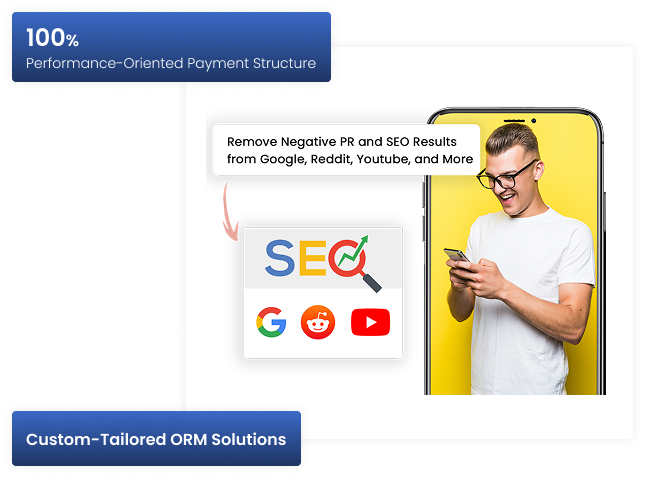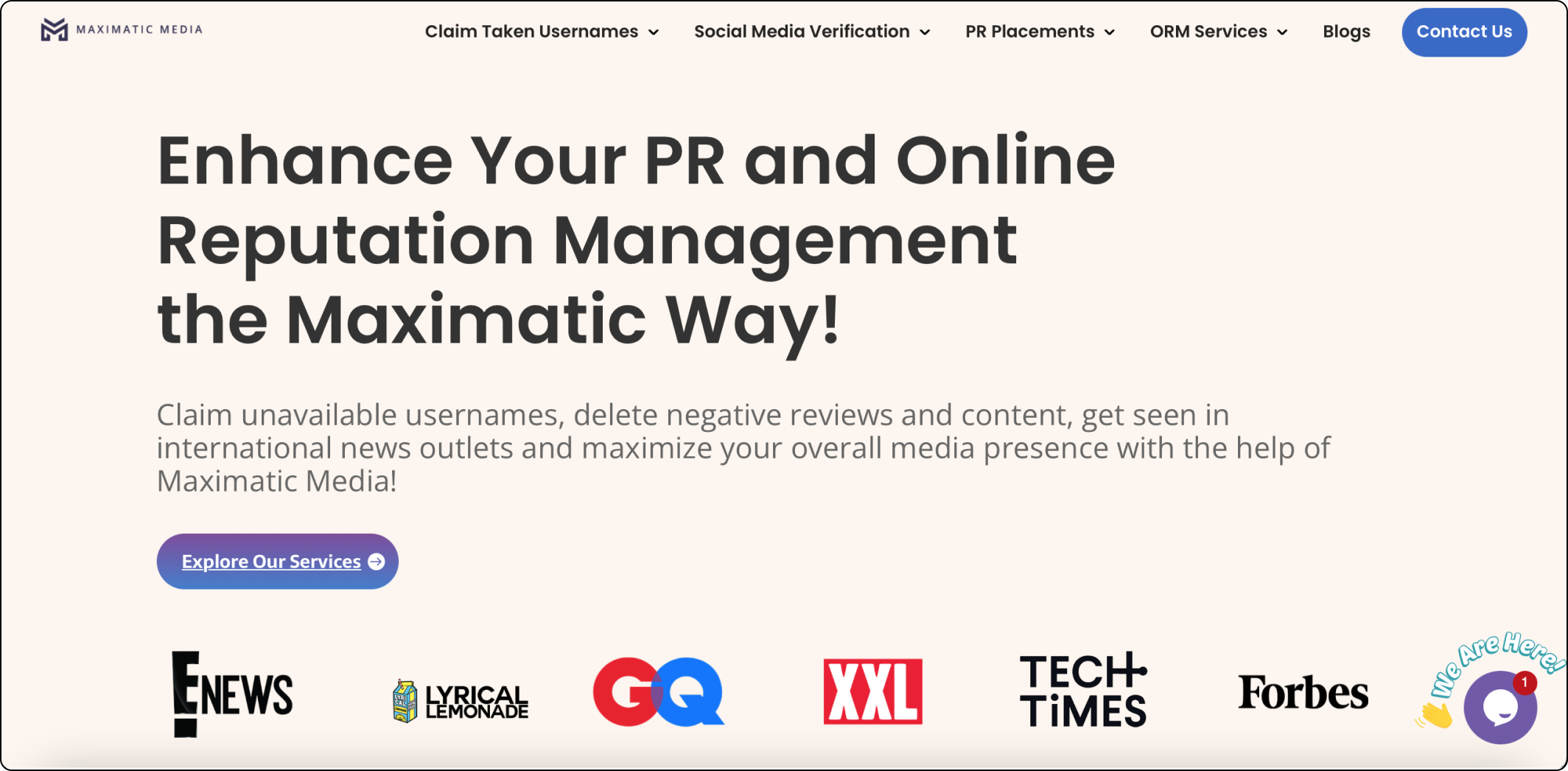
How to Bury Negative Search Results
As soon as a brand comes under fire for a controversy or a misstep, the internet seems to blow up with negative search results. These can come in the form of negative reviews, news articles, blog posts, or social media posts.
Tarte’s influencer trips are a good example of a brand being bombarded with negative search results on Google. When Tarte took influencers to Bora Bora, they received backlash for not including any people of color on the trip. The internet was flooded with articles and social media posts condemning the brand for its lack of diversity.
If a large brand like Tarte can lose control of its search results, imagine the impact negative search results can have on a smaller brand or individual. But fear not; burying those negative search results is possible with the right strategies. Let’s explore.
Table of Contents
Why You May Need to Bury Negative Search Results?
The obvious reason is reputation management. No brand wants to be associated with negative search results, as it can damage its image and hurt its bottom line.

However, there are other reasons to bury negative search results.
- Employee Recruitment: Job applicants tend to search for a company’s name online before applying. Negative search results can deter potential candidates from wanting to work for your company and can make it harder for you to attract top talent.
- Online Image: Your brand’s online image is possibly your greatest asset in today’s digitally led business landscape. A poor online presence means losing out on valuable customers.
- Personal and Professional Consequences: As an individual, negative search results can harm your personal and professional life. They can affect job opportunities, personal relationships, and overall reputation.
If the negative search results about you or your business are associated with a viral or trending topic, the damage can be even worse. For example, back in 2018, Starbucks faced immense backlash due to an incident of racial discrimination at one of its stores.
People made videos and shared negative posts about the company. As a result, the incident went viral, getting Starbucks negative press from publications like The Guardian and NBC News.
When things get this bad, it's extremely important to bury negative search results to salvage both the company's and the individual's reputation. The sooner you do it, the better.
How to Suppress Negative Search Results?
There are several ways to bury negative search results. Some involve self-help techniques, while others may require professional assistance. We discuss both types below.

Create a Personal Website
One of the first things you can do to push down negative search results is to create a personal website. Doing so gives you control over the information that appears when someone searches for you or your business.
Typically, when you search for a business name, their website is the first thing you see. The same will happen when you create your website.
You can also optimize it to further increase its chances of appearing higher in search results. This way, any negative search result will go one rank down since your site will take the top spot.
Over time, you can also create service pages and other landing pages that can appear in search engine results pages (SERPs). The more digital real estate you occupy, the lesser the chances of a negative search result appearing.
Optimize Self-Published Articles
If you already have a website, your next resort should be to optimize the content you have already published. The aim is to take space in SERPs so that negative search results about your brand go down.
Here’s how it works. Let’s say the negative search results are on the fourth and fifth rank on the first page of Google. Since most people only go through the first few search results, if you have an article that ranks second and third on page one for your brand name, it will automatically push the negative result down.
When optimizing your content, keep Google’s Experience, Expertise, Authoritativeness, and Trustworthiness (EEAT) guidelines in mind. These guidelines outline what Google looks for in high-quality content. The key is to write for people first and search engines second. That’s what Google wants you to do.
You can also work on your site’s on-page search engine optimization (SEO) to further increase its ranking potential. Here’s how:
- Keyword Use: Keyword tools like Semrush and Ahrefs can help you find keywords with a high search volume and low competition. Use these keywords in your content in a way that meets user intent.
- Internal Linking: Link pages within your website to each other using proper anchor texts. If a page is already ranking, use that page as an anchor to link to other pages within your website. This way, the link authority will spread throughout your site and help other pages rank.
- Site Speed: Work on your site’s technical SEO, too. Improve your site’s loading speed to reduce bounce rates. Google takes site speed into consideration when ranking pages.
- Mobile Responsiveness: Nearly 96.2% of people from around the world use their mobile phones to access the web. If your site is optimized for mobile, it will rank higher.
Create Social Media Profiles
Just like your website, your brand’s social media pages can also rank in Google. The search engine now shows business posts and profiles from LinkedIn, X, Instagram, Facebook, and other platforms.
Since social profiles are specific to your business, they have a higher chance of ranking quickly. If your business name is very unique, this is even more likely.
Even if you create social media profiles on three platforms, you’re taking up three additional spaces on the first page of Google for your brand. Let’s say your brand’s website and contact page are also ranking. You now have five out of ten spots on the first page of Google dedicated to your brand.
As a result, negative search results will be pushed further down, making it less likely for potential customers to see them. Even if the negative results are pushed to the second page, you’re good to go since only 0.63% of Google users click on something on the second page.
Since creating social media profiles is free, you can easily do this yourself. A pro tip is to start with LinkedIn. In a Search Engine Land study, it was found that LinkedIn profiles of businesses rank on the first page more often than other social media profiles. Of the 500 companies analyzed, 381 had a LinkedIn profile show up on the first page of Google.
Guest Post on High-Authority Websites
If your own website isn’t well-optimized or doesn’t have enough authority, you can still improve your online reputation through guest posting on high-authority websites. In this approach, you write articles on websites that have a high domain authority score.
You use your brand’s name and related keywords in your content. This way, when someone searches for your brand, the high-authority website may appear in the results.
Guest posts benefit your online reputation in two ways. First, negative results are suppressed since the guest posts take up more space on the first page of Google. Second, your brand’s name attains credibility by being associated with a high-authority website that search engines and people already trust.
But how do you find these high-authority websites? A simple Google search can do the trick. Search for phrases like “write for us” or “guest post guidelines” along with your niche/industry keywords to find relevant websites that accept guest posts. You can then use Moz to check the domain authority of these websites and prioritize which ones to target.
Appear in News Publications
What better way to appear on Google’s first page than being featured in news publications? When a reputable news source mentions your brand, it adds authenticity and trustworthiness to your online reputation. It also helps push down any negative results related to your brand, as more people are likely to see positive news articles.
You also collect backlinks for your website. Again, it ties in with the first method we suggested, where you create and optimize your site for higher rankings.
Suppose a small blog has written a negative post about you. It has gained a lot of traction and is now the third search result when someone searches for your brand.
However, if you get featured in Yahoo or Forbes, these articles will automatically rank higher than the negative blog post. The end result? Your brand’s reputation is not only restored but also elevated.
One way to appear in news articles is to give interviews. If you’re an industry expert, journalists and bloggers will be likely to approach you for quotes and insights. You can also pitch your story or press releases to relevant publications. Many news websites publish opinion pieces or thought leadership articles from reputable business owners and individuals.
Invest in Digital PR
Sometimes, your personal efforts don’t yield the results you want. That’s when you need professional help from an agency like Maximatic Media. We can help your brand get featured in top publications like The Washington Post, The NY Times, Forbes, and more.
With such high-authority and reputable websites linking back to your site, you’ll see a significant improvement in your online reputation. Our team of experienced PR professionals will work with you to create compelling stories and pitches that will capture the attention of top-tier media outlets.
Our digital PR efforts will have a two-fold impact on your online reputation. Besides suppressing negative search results, it will also bring your business the exposure that comes from being featured in renowned publications read by hundreds of thousands of people.
Bury Negative Search Results
Remove any negative search results or online press from Google in their entirety.

How to Remove Negative Search Results?
An alternative to buying negative search results is to hire an online reputation management (ORM) company to completely remove negative articles about your business. You may need to do this if these search results are doing too much harm to your business and cannot be suppressed through other methods.

At Maximatic Media, we take a number of routes to remove negative search results. These include legal options, such as filing a lawsuit for defamation or copyright infringement. We also work with Google to submit content removal requests to take down offensive or negative articles.
If that doesn’t work, we attempt to deindex the negative search results through thorough SEO tactics, making it harder for people to find and see the negative content. Our blend of legal and technical solutions keeps your online reputation safe and protected.
Get in touch
Got a query that Nikolas Lemmel can help you with?
Conclusion
As evident, suppressing negative search results is a must-do, especially when they are driving away potential customers and giving your business a bad name. You can start by creating a solid online presence for yourself that takes up most of the top search results so that negative content about your brand doesn’t appear on the first page.
However, if that doesn’t work, Maximatic Media can help you through digital PR and reputation management. Our services come with a high success guarantee, so you can count on us to repair your image online. Get in touch to share your concerns.
Check out other Blogs

How to Deindex a Page from Google to Manage Negative Content
Have you ever searched your name or business online and found pages you’d rath…

How to Remove a Mugshot From the Internet
Online photos are usually harmless, but sometimes they can significantly affect your…

What Is Search Engine Reputation Management
Although a relatively young industry, the online reputation management sector is …

